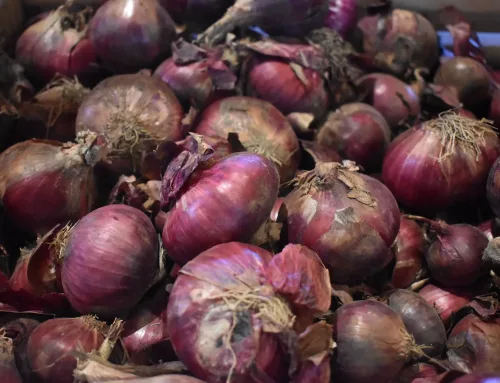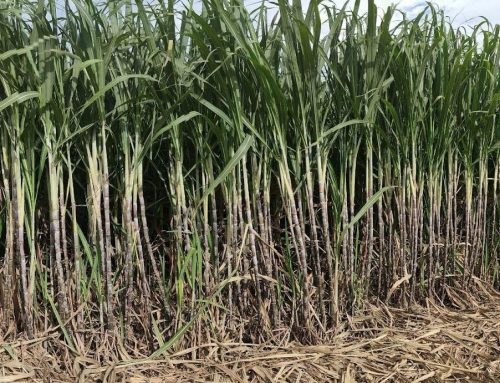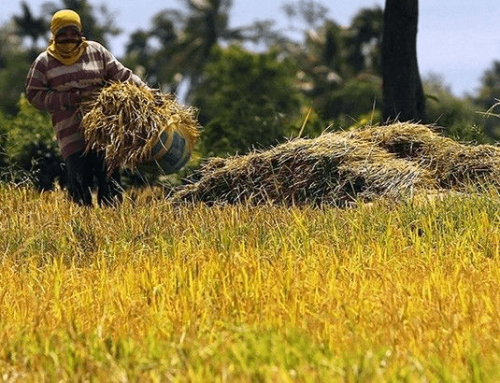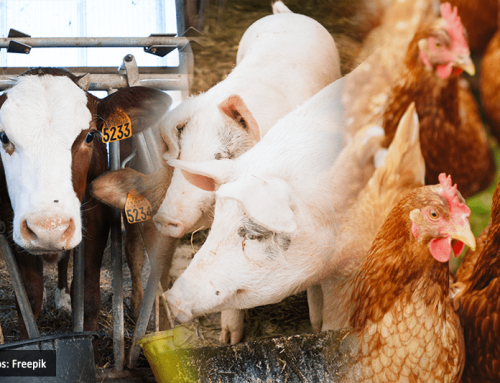In this Article
Explore the latest trends in the Philippine rice market, where high retail prices persist despite rising imports. Government interventions aim to stabilize prices, addressing production declines and discrepancies impacting consumers and local farmers.
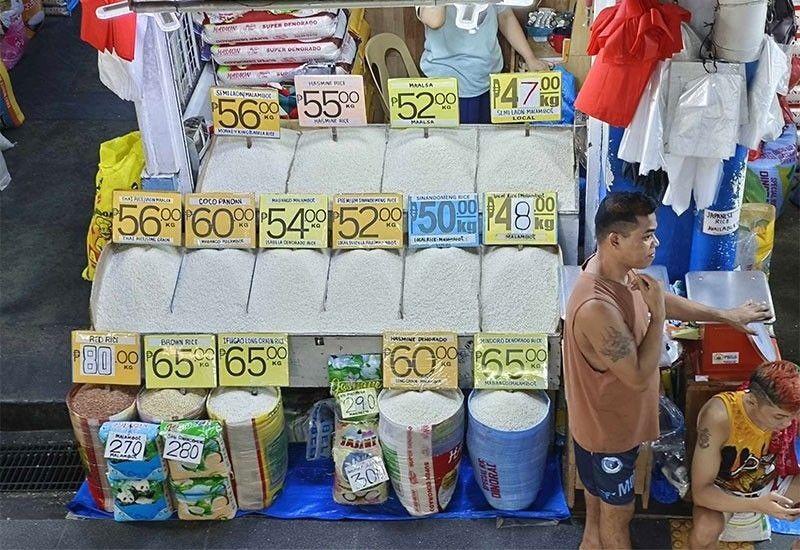
High Rice Retail Prices Amid High Rice Imports
On November 4, 2024, Agriculture Secretary Francisco Tiu Laurel Jr. expressed concerns over suspected price manipulation. Retail prices for imported rice remained high at Php42 to Php55 per kilogram (kg) despite a wholesale price drop to Php38 per kg. Based on current wholesale costs, retail prices should ideally be closer to Php45 per kg. The Department of Agriculture’s (DA) price monitoring data also indicated that retail rice prices typically decrease from September to October, further underscoring the unusual nature of this price disparity.
Table 1. Price Trend of Retail Prices of Rice (Php/kg) from September to October 2023 – 2024
|
Rice Types |
2023 |
2024 |
||
|
September |
October |
September |
October |
|
|
Well-Milled Rice |
52.69 |
50.99 |
55.51 |
55.28 |
|
Regular-Milled Rice |
47.54 |
45.42 |
50.47 |
50.22 |
|
Special Rice |
61.04 |
60.89 |
64.05 |
63.97 |
|
Average |
53.76 |
52.43 |
56.68 |
56.49 |
Source: DA, 2024
To address this, the DA will conduct random inspections across Metro Manila’s public markets to gather price data and assess compliance with the Price Act of 1993. This law allows the DA to recommend a price ceiling to the President if prices are excessive. The department is also considering setting up Kadiwa stores offering rice at a lower price of Php43 per kg, encouraging other sellers to reduce prices.
Rice imports have surged to 3.68 million metric tons (MT) by late October, following a tariff reduction from 35% to 15% under Executive Order No. 62 to control inflation. Despite these imports, the anticipated relief in retail prices has not materialized, raising the urgency for DA intervention to prevent potential profiteering and ensure consumers benefit from the recent policy changes.
Palay Production and Price Levels Trend
On November 11, 2024, the Philippine Statistics Authority (PSA) released its latest rice production data in the OpenSTAT database. A comparative analysis between 2023 and 2024 shows a progressive decline in production volume, with Q1 declining from 4.78 million MT in 2023 to 4.69 MT in 2024, followed by a more significant decrease in Q2 from 4.25 million MT to 3.85 million MT and an even steeper decline in Q3 from 3.80 million MT to 3.33 million MT (Table 1). These declines coincide with El Niño and adverse weather conditions through Q1-Q3 2024, affecting rice production. The impact extends to rice harvested area, where Q3 2024 has a substantial decline to 792,221.21 hectares (HA) from 926,923.12 HA in Q3 2023, representing a reduction of 134,701.91 HA. The Q2 to Q3 2024 period showed an 11% reduction in harvested area, contributing to a 13% decrease in production.
Regarding the yield performance, Q3 2024 showed a slight improvement at 4.20 MT/HA compared to Q3 2023 yield at 4.10 MT/HA. The DA noted that efforts under the Rice Competitiveness Enhancement Fund (RCEF) and the National Rice Program (NRP), including better seeds and farm equipment, have somewhat mitigated greater losses. The DA largely attributes the production decline to adverse weather patterns. This situation is expected to worsen, with a 71% chance of La Niña continuing up to early 2025. La Niña typically increases the risk of cyclones and intensifies monsoon rains as forecasted by the Philippine Atmospheric, Geophysical and Astronomical Services Administration (PAGASA).
Table 2. Unmilled Rice/ Palay Production, Area Harvested, and Yield (MT/Ha), Q1-Q3, 2023-2024
|
Unmilled Rice/ Palay |
Q1 |
Q2 |
Q3 |
|||
|
2023 |
2024 |
2023 |
2024 |
2023 |
2024 |
|
|
Production (MT) |
4,778,787.84 |
4,685,040.07 |
4,247,396.64 |
3,845,323.06 |
3,797,857.26 |
3,329,178.55 |
|
Area Harvested (HA) |
1,176,182.29 |
1,174,635.18 |
960,864.48 |
890,596.14 |
926,923.12 |
792,221.21 |
|
Yield (MT/HA) |
4.06 |
3.99 |
4.42 |
4.32 |
4.10 |
4.20 |
Source: PSA, 2024
In Q3 2024, rice prices at farmgate, wholesale, and retail levels generally declined. Farmgate prices for palay dropped sharply by around 10% from the previous quarter. Wholesale prices also decreased across all rice types, indicating improved supply and market stability due to an increase in the level of imports. Retail prices followed a similar trend, with consistent declines across all rice types.
Table 3. Average Rice Price (in Php) Trends per Kilogram (kg) Nationwide, 2024
|
Price Levels |
Q2 (Php/kg) |
Q3 (Php/kg) |
Percentage Decline (%) |
|
Farmgate Prices of Palay |
25.99 |
23.38 |
-10.04 |
|
Wholesale Prices |
|||
|
Rice Special |
55.17 |
54.60 |
-1.02 |
|
Rice Premium |
53.78 |
52.47 |
-2.44 |
|
Well Milled Rice (WMR) |
50.47 |
49.68 |
-1.56 |
|
Regular Milled Rice (RMR) |
46.93 |
46.07 |
-1.83 |
|
Retail Prices |
|||
|
Well Milled Rice (WMR) |
56.15 |
55.64 |
-0.90 |
|
Regular Milled Rice (RMR) |
51.12 |
50.68 |
-0.86 |
|
Rice Special |
64.55 |
64.18 |
-0.57 |
Source: PSA, 2024
The DA announced a projected decline of 3.24% in palay production for 2024 from 20.06 million MT in 2023 to a projected 19.41 million MT this year. Agriculture Undersecretary for Rice Industry Development, Mr. Christopher Morales, mentioned that the decrease was primarily due to crop losses from tropical cyclones and El Niño. Notably, around 1 million MT of rice production has been lost due to El Niño, with an additional 239,000 MT lost to Typhoon Kristine. A potential increase in rice imports to stabilize the domestic supply is anticipated. However, despite the production challenges, the DA aims to maintain a year-end national rice inventory of 3.83 million MT, sufficient to meet approximately 100 days of demand.
Government Support and interventions
- DA’s Rice Roadmap
The DA plans to launch the Philippine Rice Industry Roadmap (PRIR) by year-end, aimed at significantly boosting rice production through enhanced crop intensity and innovative practices such as ratooning and third-crop planting. Agriculture Secretary Tiu Laurel explained that the roadmap will encourage using inbred seeds for a third crop and promote ratooning. In this technique, rice is harvested from regrowth on stubble after the main crop, according to the International Rice Research Institute (IRRI). These strategies align to increase yields and provide rice farmers with practical methods to improve productivity.
Mr. Senen Reyes, former Executive Director of the University of Asia and the Pacific’s Center for Food and Agribusiness (UA&P CFA), noted that the roadmap’s success will hinge on consistent government support, sustainable funding and broad stakeholder involvement. Developed in accordance with the Rice Tariffication Law, the PRIR emphasizes research, productivity, and income support for small-scale farmers impacted by tariff policies. Special Order 1463 directs a cross-sectoral team, led by Ms. Hazel Tanchuling of the Rice Watch Action Network, to refine and finalize the roadmap in collaboration with the NRP to produce an actionable, stakeholder-driven plan for the rice industry’s future.
- DOST-PCAARRD’s Interventions
Molecular Mechanism of Rice Root System
Funded by the Department of Science and Technology – Philippine Council for Agriculture, Aquatic, and Natural Resources Research and Development (DOST-PCAARRD), this project was undertaken by the Philippine Rice Research Institute (PhilRice) to enhance rice resilience under water stress. Focused on understanding the molecular mechanisms of root system formation, the project explored lateral root development, gene expression, and epigenetic regulation in drought conditions. Conducted in Muñoz, Nueva Ecija, and led by Dr. Roel Suralta, the project identified a specific gene associated with root growth under water stress. Key accomplishments included optimizing hydroponic systems for early root screening and accelerating breeding cycles, which are critical for developing drought-tolerant rice varieties. The project’s outcomes support the development of advanced breeding lines and functional genetic markers, equipping rice breeders with essential tools for improving crop resilience and productivity in water-limited environments.
Trichoderma Technologies on Rice Straw Management
Another project focused on advancing sustainable rice straw management in the Philippines, utilizing Trichoderma microbial technology to enhance agricultural resilience. In partnership with the University of the Philippines Los Baños (UPLB) College of Agriculture and Food Science (CAFS) led by Dr. Pearl Sanchez, the project focuses on piloting and validating on-site composting techniques in major rice-growing areas, with initial trials conducted in Siniloan, Laguna. This initiative aims to improve rice yields, cut fertilizer costs, and support climate adaptation by investigating Trichoderma’s role in promoting soil health, controlling rice diseases, and fostering bioremediation, presenting a promising biological alternative for sustainable crop management. This project ultimately strives to elevate the socio-economic well-being of rice farmers by reducing input dependency and advancing eco-friendly agricultural practices.
Market Outlook
Due to the surge in rice imports following the tariff reduction from 35% to 15% under Executive Order No. 62 implemented to control inflation, the rice market is expected to experience continued declining farmgate and retail prices in the short term. At the same time, the impact of typhoon damage may create supply disruptions in the affected regions. While retail prices remain elevated, government scrutiny over pricing discrepancies among market players may prompt adjustments in the market. Local farmers are experiencing a double impact: they are competing with cheaper imported rice that captures a significant share of consumer demand and contend with rice losses and infrastructure damage from Typhoon Kristine. It may take time for local production to recover from typhoon damage, for government interventions to fully address the supply-demand situation, and for prices to stabilize.
References: Arcalas, J.E. (2024, October 30). ‘Rice prices remain high as retailers make a killing’. Philippine Star. Retrieved October 30, 2024 from https://www.philstar.com/business/2024/10/30/2396213/rice-prices-remain-high-retailers-make-killing
Halili, A.H. (2024, October 23). Palay output officially estimated at 19.41 MMT in 2024, down 3.24%. Business World. Retrieved November 4, 2024 from https://www.bworldonline.com/economy/2024/10/23/630295/palay-output-officially-estimated-at-19-41-mmt-in-2024-down-3-24/
Halili. A.H. (2024, October 30). Rice imports at 3.68 MMT year to date. Business World. Retrieved October 30, 2024 from https://www.bworldonline.com/economy/2024/10/30/631816/rice-imports-at-3-68-mmt-year-to-date/
Pelonia, A. (2024, October 17). Rice output seen lower as harvest area shrinks. Business Mirror. Retrieved November 4, 2024 from https://businessmirror.com.ph/2024/10/17/rice-output-seen-lower-as-harvest-area-shrinks/
Pelonia, A. (2024, November 4). Govt to push ratooning, use of inbred rice seeds. Business Mirror. Retrieved November 4, 2024 from https://businessmirror.com.ph/2024/11/04/govt-to-push-ratooning-use-of-inbred-rice-seeds/
Philippine Statistics Authority (PSA). (2024, November 4). Palay and Corn: Volume of Production in Metric Tons by Ecosystem/Croptype, by Quarter, by Semester, by Region and by Province, 1987-2024. OpenSTAT Database. Retrieved November 4, 2024 form https://openstat.psa.gov.ph/PXWeb/pxweb/en/DB/DB__2E__CS/0012E4EVCP0.px/table/tableViewLayout1/?rxid=bdf9d8da-96f1-4100-ae09-18cb3eaeb313
Philippine Statistics Authority (PSA). (2024, November 4). Palay and Corn: Area Harvested in Hectares by Ecosystem/Croptype, by Quarter, by Semester, by Region and by Province, 1987-2024. OpenSTAT Database. Retrieved November 4, 2024 form https://openstat.psa.gov.ph/PXWeb/pxweb/en/DB/DB__2E__CS/0022E4EAHC0.px/table/tableViewLayout1/?rxid=bdf9d8da-96f1-4100-ae09-18cb3eaeb313
Philippine Statistics Authority (PSA). (2024, November 4). Cereals: Farmgate Prices by Geolocation, Commodity, Year and Period. OpenSTAT Database. Retrieved November 4, 2024 form https://openstat.psa.gov.ph/PXWeb/pxweb/en/DB/DB__2M__NFG/0032M4AFN01.px/table/tableViewLayout1/?rxid=bdf9d8da-96f1-4100-ae09-18cb3eaeb313
Philippine Statistics Authority (PSA). (2024, November 4). Cereals: Wholesale Selling Prices of Agricultural Commodities. OpenSTAT Database. Retrieved November 4, 2024 form https://openstat.psa.gov.ph/PXWeb/pxweb/en/DB/DB__2M__NWS/0052M4AWA01.px/table/tableViewLayout1/?rxid=bdf9d8da-96f1-4100-ae09-18cb3eaeb313
Philippine Statistics Authority (PSA). (2024, November 4). Cereals: Retail Prices of Agricultural Commodities by Geolocation, Commodity, Year and Period. OpenSTAT Database. Retrieved November 4, 2024 form https://openstat.psa.gov.ph/PXWeb/pxweb/en/DB/DB__2M__2018/0042M4ARA01.px/table/tableViewLayout1/?rxid=bdf9d8da-96f1-4100-ae09-18cb3eaeb313

